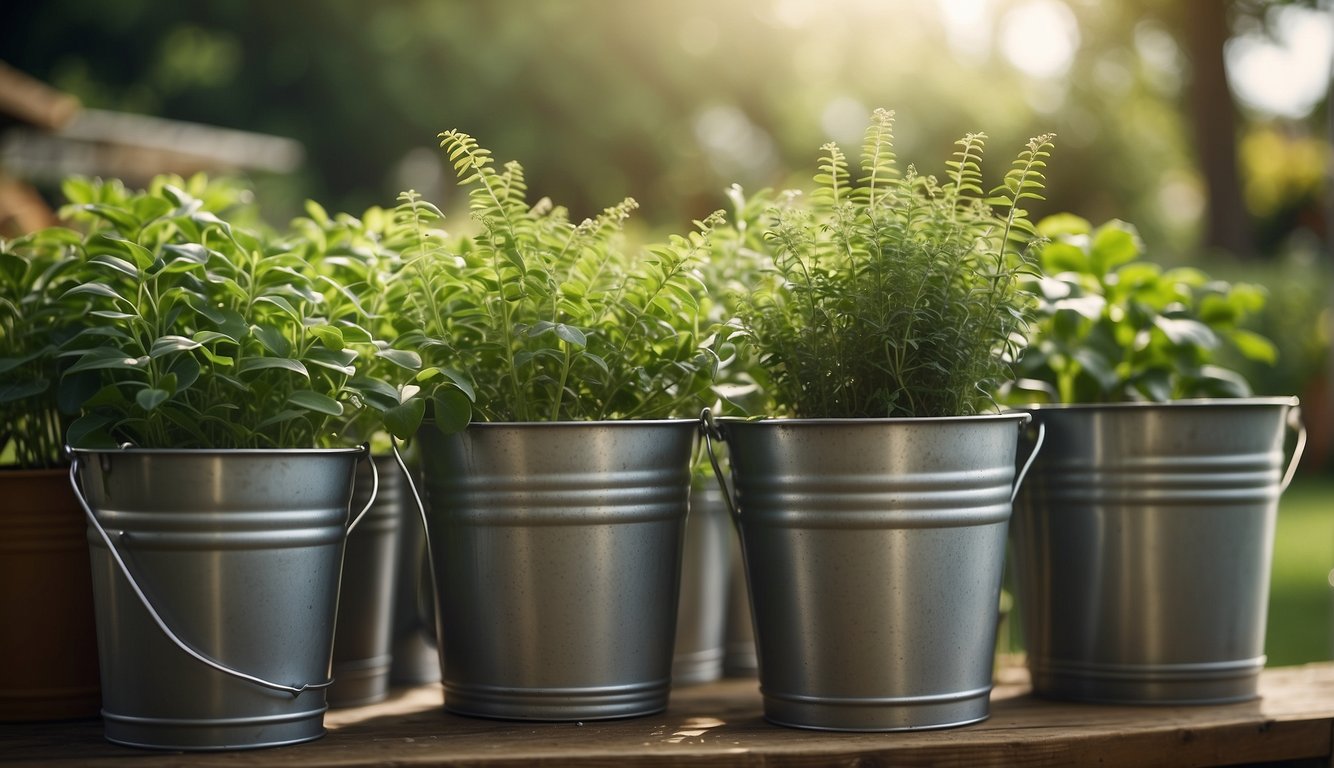TheHerbProf.com is a treasure trove of knowledge for those interested in natural healing and herbal remedies. The website is run by Paul Johnston MD. A naturopathic who has not only received extensive education in the field but also has personal experience in self-healing.
Gardening is a rewarding activity that can bring joy to people of all ages. However, not everyone has access to a large outdoor space for a traditional garden. This is where gardening in buckets comes in. With just a few 5-gallon buckets, you can create a thriving garden full of vegetables and plants, even if you live in an apartment or have limited outdoor space.
One of the biggest advantages of bucket gardening is its versatility. You can grow a wide variety of vegetables, herbs, and flowers in buckets, and you can place them anywhere that gets enough sunlight. This means that even if you don’t have a yard, you can still enjoy the benefits of gardening. Plus, because buckets are portable, you can move them around to find the best spot for your plants.
Another benefit of bucket gardening is that it is a great way to save money. Traditional gardens require a lot of space, soil, and water, which can add up to a significant expense. With bucket gardening, you can use less soil and water, and you can even repurpose old buckets that you might have lying around. Plus, because you can grow your own vegetables, you can save money on groceries.
Advantages of Gardening in Buckets
Gardening in buckets is a great way to grow plants, especially if you have limited space or want a portable garden. Here are some of the advantages of gardening in buckets:
Portable
One of the biggest advantages of gardening in buckets is that it’s portable. You can move your garden around to follow the sun or to make room for other activities. This is especially useful if you live in an apartment or have a small yard.
Space-saving
Another advantage of gardening in buckets is that it takes up very little space. You can fit a lot of plants in a small area by using buckets. This is great if you have a small yard or patio.
Fewer weeds
When you garden in buckets, you can control the soil and prevent weeds from growing. This means you’ll spend less time weeding and more time enjoying your garden.
Inexpensive
Gardening in buckets is an inexpensive way to grow plants. You can use 5-gallon buckets, which are very affordable and easy to find. You can also reuse buckets from other projects or ask local businesses for their used buckets.
Gardening in buckets has many advantages. It’s portable, space-saving, reduces weeds, and is inexpensive. Plus, it’s a great way to grow plants in a small space or on a budget.
Essential Tools for Gardening in Buckets
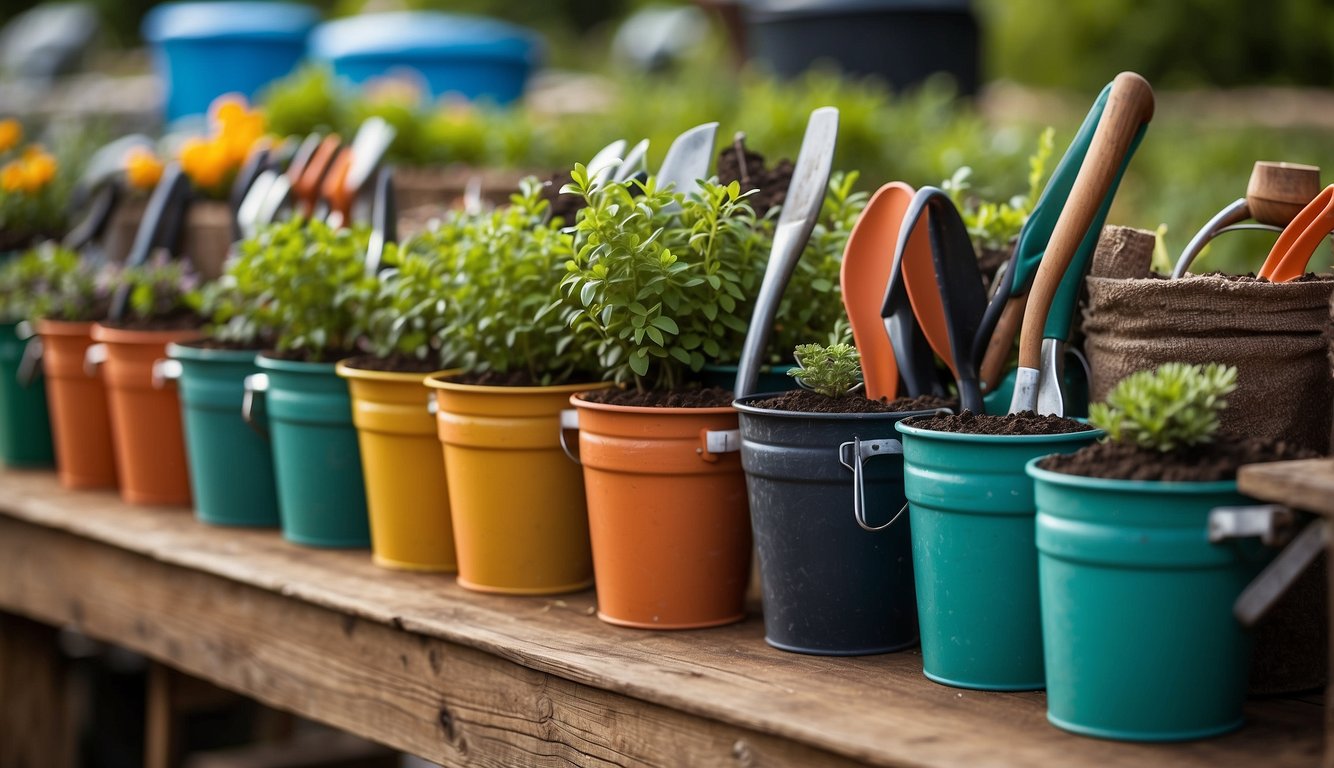
As someone who has been gardening in buckets for years, I can attest that having the right tools is crucial for success. Here are some of the essential tools you will need for bucket gardening:
BPA-Free 5-Gallon Buckets
The first thing you will need is a BPA-free 5-gallon bucket. These buckets are perfect for container gardening because they are sturdy, lightweight, and come with a built-in handle. You can find these buckets at your local hardware store or online. Make sure to choose a bucket that is BPA-free to avoid any harmful chemicals leaching into your soil.
Drill for Drainage Holes – Gardening in Buckets
Next, you will need a drill to make drainage holes in the bottom of your bucket. Without proper drainage, your plants will drown and die. Drill several holes in the bottom of your bucket to allow excess water to drain out.
Gravel or Small Rocks
To aid in drainage, add a layer of gravel or small rocks to the bottom of your bucket. This will help prevent water from pooling at the bottom and causing root rot. It also helps to keep the soil from washing out of the drainage holes.
Quality Potting Soil – Gardening in Buckets
Using quality potting soil is essential for healthy plants. Regular garden soil is too dense for container gardening and can suffocate your plants. Choose a potting soil that is light, fluffy, and well-draining. You can find potting soil at your local garden center or online.
Seeds or Seedlings
Finally, you will need seeds or seedlings to plant in your bucket. Choose plants that are suitable for container gardening, such as herbs, tomatoes, peppers, and strawberries. Make sure to read the seed packet or plant label to ensure you are providing the right amount of sunlight, water, and nutrients for your plants.
With these essential tools, you will be well on your way to a successful bucket garden. Happy gardening!
Step-by-Step Guide to Setting up a Gardening in Buckets
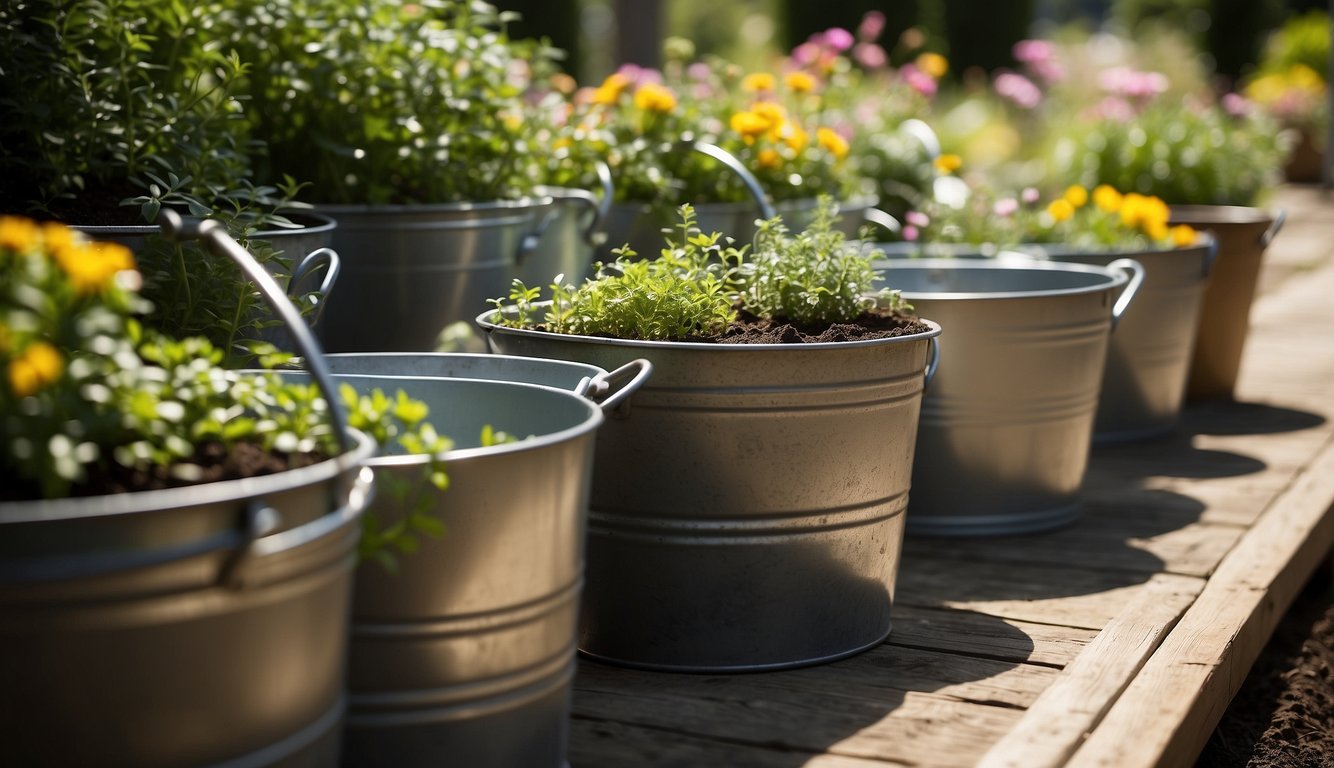
If you have limited space or want to try container gardening, setting up a bucket garden is a great option. Here is a step-by-step guide to help you get started.
Buying the 5-Gallon Buckets
To set up a bucket garden, you will need 5-gallon buckets. You can purchase them at a local hardware store or online. Make sure the buckets are clean, sturdy, and have a handle for easy transport.
Drilling Drainage Holes – Gardening in Buckets
Drainage is crucial for a successful bucket garden. Drill 4-6 holes in the bottom of each bucket using a 1/4 inch drill bit. This will allow excess water to drain out and prevent waterlogging.
Placing Gravel for Drainage
After drilling the holes, add a layer of gravel to the bottom of each bucket. This will help with drainage and prevent the soil from becoming compacted. Fill the bucket with enough gravel to cover the bottom holes.
Filling with Potting Soil – Gardening in Buckets
Once the gravel is in place, fill the bucket with potting soil. Use a high-quality potting soil that is rich in nutrients and has good drainage properties. Leave about 1 inch of space at the top to prevent soil from spilling over when watering.
Planting Seeds or Seedlings
Now it’s time to plant your seeds or seedlings. Choose vegetable plants that are suitable for container gardening and will fit in a 5-gallon bucket. Some great options include tomatoes, peppers, lettuce, and herbs. Follow the planting instructions for your chosen plants, and water them regularly.
That’s it! With a little effort and care, you can grow your own vegetables in a bucket garden. Happy gardening!
Types of Plants Suitable for Gardening in Buckets
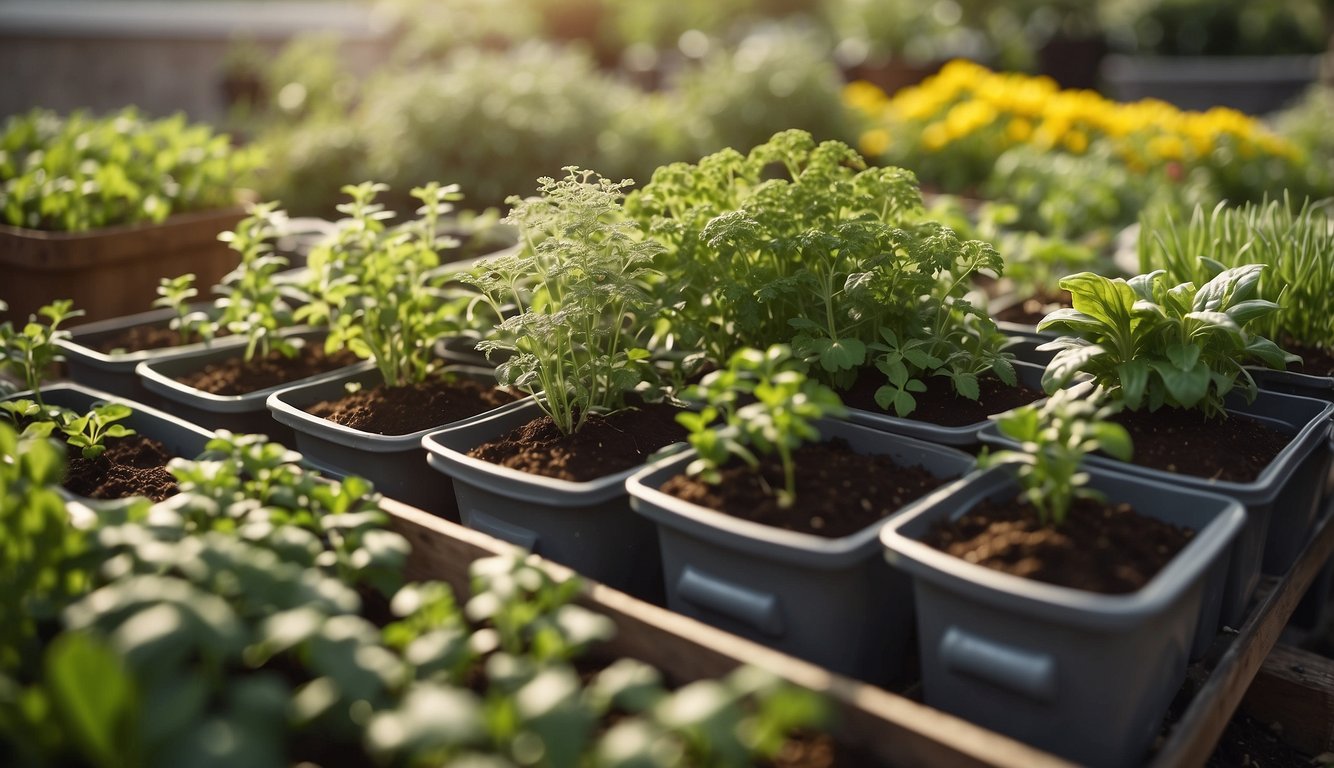
Growing plants in buckets is a great option for those who have limited space or want to start a garden without having to till a large plot of land. Here are some types of plants that are suitable for bucket gardening.
Tomatoes – Gardening in Buckets
Tomatoes are one of the most popular plants for bucket gardening. They are easy to grow and produce a lot of fruit. Cherry tomatoes are a great option for small buckets, while larger varieties like beefsteak tomatoes need larger buckets. Make sure to provide support for your tomato plants by using stakes or cages.
Peppers
Peppers are another popular option for bucket gardening. They come in a variety of colors and flavors, and can be grown in small or large buckets. Bell peppers, jalapenos, and habaneros are all great options for bucket gardening.
Eggplant – Gardening in Buckets
Eggplants are a great option for bucket gardening, especially if you have limited space. They are easy to grow and produce a lot of fruit. Make sure to provide support for your eggplant plants by using stakes or cages.
Zucchini
Zucchini is a great option for bucket gardening, especially if you have limited space. They are easy to grow and produce a lot of fruit. Make sure to provide support for your zucchini plants by using stakes or cages.
Strawberries – Gardening in Buckets
Strawberries are easy to grow in buckets, particularly if you install a trellis to maximize your space. Grow an everbearing variety and you’ll get a constant harvest all summer long. Most strawberry plants stay productive for several years.
Blueberries
Blueberries are a great option for bucket gardening. They are easy to grow and produce a lot of fruit. Make sure to provide acidic soil for your blueberry plants by mixing peat moss, pine needles, or coffee grounds into the soil.
When it comes to bucket gardening, there are many different types of plants that you can grow. From vegetables like tomatoes, peppers, and eggplant, to fruits like strawberries and blueberries, there is no shortage of options. Just make sure to choose plants that are appropriate for the size of your bucket and provide the right amount of support.
Tips and Tricks for Successful Gardening in Buckets
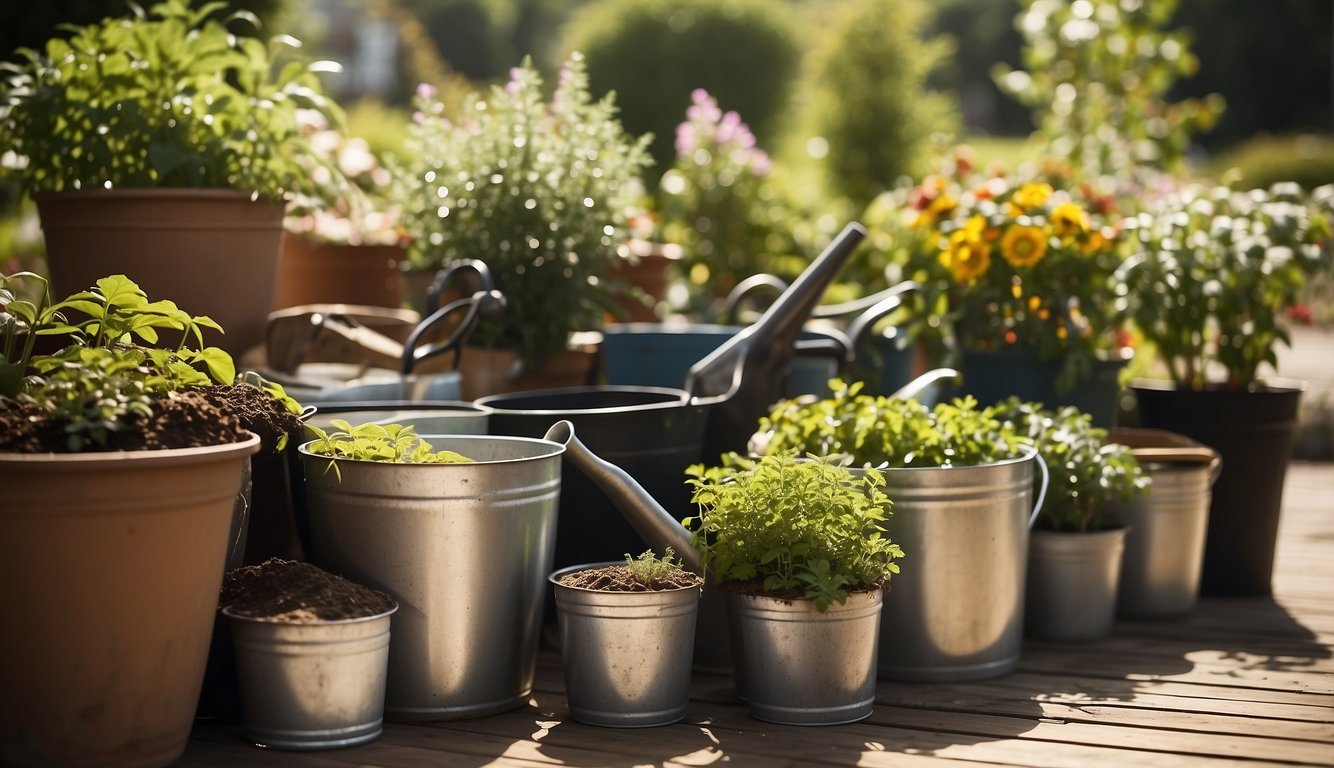
As an experienced bucket gardener, I have learned a few tips and tricks along the way that have helped me achieve successful harvests year after year. Here are some of my top recommendations:
Choose the Right Bucket – Gardening in Buckets
When it comes to bucket gardening, not all buckets are created equal. Look for food-grade, five-gallon buckets that have not been used to store chemicals or pool supplies. These buckets can be found at home improvement stores or online.
Use a Good Soil Mix
The soil mix you use can make or break your bucket garden. I recommend using a soilless mix that includes perlite, vermiculite, and peat moss. You can also add organic material, such as worm castings or compost, to provide additional nutrients for your plants.
Water Consistently – Gardening in Buckets
Consistent watering is key to a successful bucket garden. I recommend watering deeply once or twice a week, depending on the weather. Be sure to check the soil moisture level before watering to avoid over or under watering.
Fertilize Regularly
In addition to a good soil mix, your plants will also need regular fertilizing to thrive. I recommend using a balanced fertilizer every two to three weeks throughout the growing season.
Provide Adequate Sunlight
Most vegetable plants and annuals require at least six hours of direct sunlight per day. Be sure to place your bucket garden in a sunny location, such as a patio or near a window. If you have limited space, consider using hanging baskets or window boxes.
Mulch to Retain Moisture – Gardening in Buckets
Adding a layer of mulch to the top of your soil can help retain moisture and prevent weeds from growing. I recommend using pine bark or shredded leaves as a natural mulch.
Use Stakes or Cages for Support
Tall plants, such as tomatoes or beans, may require support to prevent them from falling over. Use stakes or cages to provide support and keep your plants growing upright.
By following these tips and tricks, you can create a successful bucket garden that produces a bountiful harvest all season long.
Before You Go – Gardening in Buckets
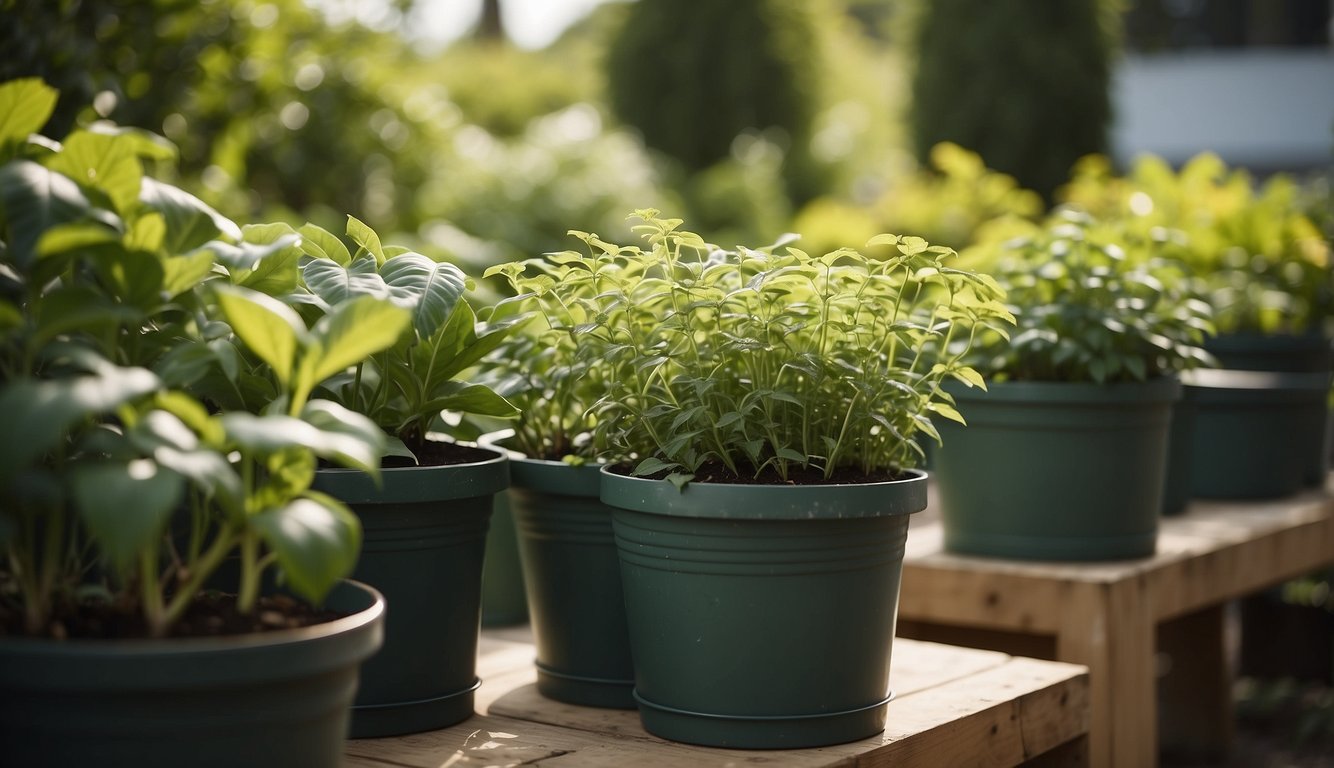
Bucket gardening is a great way to grow plants, especially if you have limited space. By using 5-gallon buckets, you can easily grow a variety of plants, including vegetables, herbs, and flowers.
One of the benefits of bucket gardening is that it allows for more control over the growing environment. Since the plants are in containers, you can easily adjust the soil, water, and nutrients to ensure that they are getting what they need. Additionally, bucket gardening can be a great way to experiment with different growing techniques, such as hydroponics or vertical gardening.
When it comes to selecting plants for your bucket garden, there are a few things to keep in mind. First, choose plants that are well-suited to container growing. Some good options include cherry tomatoes, peppers, lettuce, and herbs like basil and cilantro. Additionally, make sure that the plants you choose have similar water and nutrient requirements, as this will make it easier to care for them.
Overall, bucket gardening is a fun and rewarding way to grow plants, no matter how much space you have. With a little bit of planning and care, you can create a beautiful and productive garden right in your own backyard (or even on your balcony or patio!).
Gardening in Buckets: A Herbalist’s Adventure
Today, we’re diving into a fun and space-saving gardening method – gardening in buckets. Yes, you heard it right! You can grow a variety of plants right in a bucket. It’s gardening made easy and accessible!
First off, let’s talk about why you’d want to garden in buckets. It’s simple – it’s perfect for small spaces! Whether you have a tiny balcony or a small backyard, you can grow your own plants. Plus, it’s a great way to get kids involved in gardening. They’ll love watching their plants grow!
Now, let’s tie this back to theherbprof.com. As your friendly neighborhood Herbalist Blogger, I’m all about helping you make the most of your space and resources. And gardening in buckets? It’s a perfect example!
By gardening in buckets, you’re not just growing your own plants. You’re also embracing the principles of space-saving gardening, a topic I’m passionate about and often discuss on my blog, theherbprof.com.
So, why not give it a try? Grab a bucket, some soil, and your favorite seeds, and start your bucket gardening adventure. Your green thumb (and your space) will thank you!
References – Gardening in Buckets
Little Herb Encyclopedia, by Jack Ritchason; N.D., Woodland Publishing Incorporated, 1995
The Ultimate Healing System, Course Manual, Copyright 1985, Don Lepore
Planetary Herbology, Michael Tierra, C.A., N.D., Lotus Press, 1988
Handbook of Medicinal Herbs, by James A. Duke, Pub. CRP Second Edition 2007
The Complete Medicinal Herbal, by Penelope Ody, Published by Dorling Kindersley
Check the Following Articles!
Growing Spearmint Indoors: Tricks for a Successful Harvest
Pumpkin Fungus Treatment: Get Rid of Fungal Infections
How to Trim Pothos: A Step-by-Step Guide
Frequently Asked Questions – Gardening in Buckets
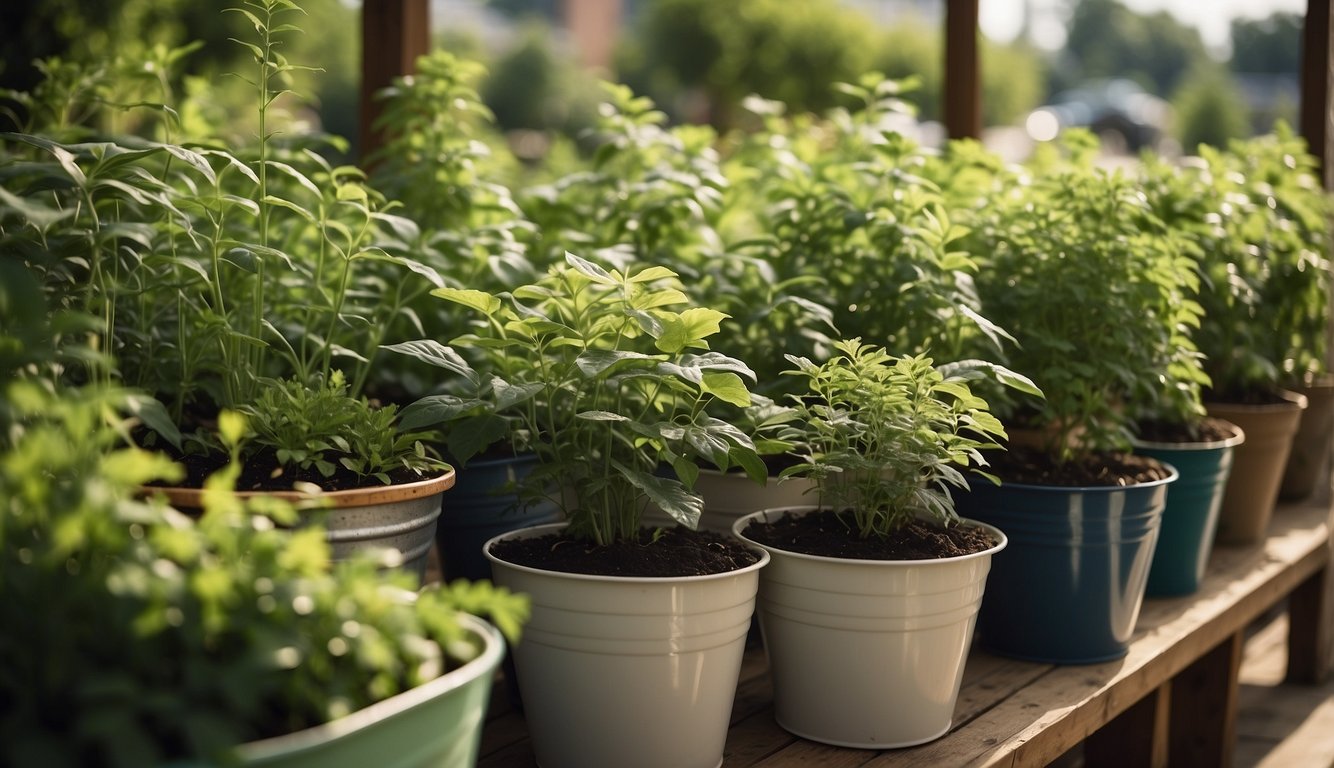
What are the best vegetables to grow in 5-gallon buckets?
When it comes to growing vegetables in 5-gallon buckets, there are many options available. Some of the best vegetables to grow in 5-gallon buckets include tomatoes, peppers, cucumbers, beans, and lettuce. These vegetables are easy to grow and require minimal space.
How do you set up a bucket gardening system?
Setting up a bucket gardening system is relatively easy. First, drill several holes in the bottom of the bucket to allow for proper drainage. Next, fill the bucket with a good quality potting soil. Then, plant your chosen vegetables in the soil and water as needed.
Can you grow fruits in buckets, and if so, which are best suited for it?
Yes, you can grow fruits in buckets. Some of the best fruits to grow in buckets include strawberries, blueberries, and raspberries. These fruits are ideal for container gardening because they require minimal space and can be easily maintained.
What is the maximum number of plants suitable for a single 5-gallon bucket?
The maximum number of plants suitable for a single 5-gallon bucket depends on the size of the plants. Generally, it is recommended to plant one large plant or two to three smaller plants in a single 5-gallon bucket. This will ensure that the plants have enough space to grow and thrive.
Are plastic buckets safe for growing edible plants, and what precautions should be taken?
Plastic buckets are safe for growing edible plants as long as they are food-grade and have not been previously used to store chemicals or other hazardous materials. When using plastic buckets for growing edible plants, it is important to wash them thoroughly before use and to avoid using buckets that have cracks or other damage.
Which vegetables are ideal for growing in smaller containers like 2-gallon buckets?
Smaller containers like 2-gallon buckets are ideal for growing smaller vegetables such as herbs, radishes, and carrots. These vegetables do not require as much space to grow and can be easily maintained in smaller containers.
